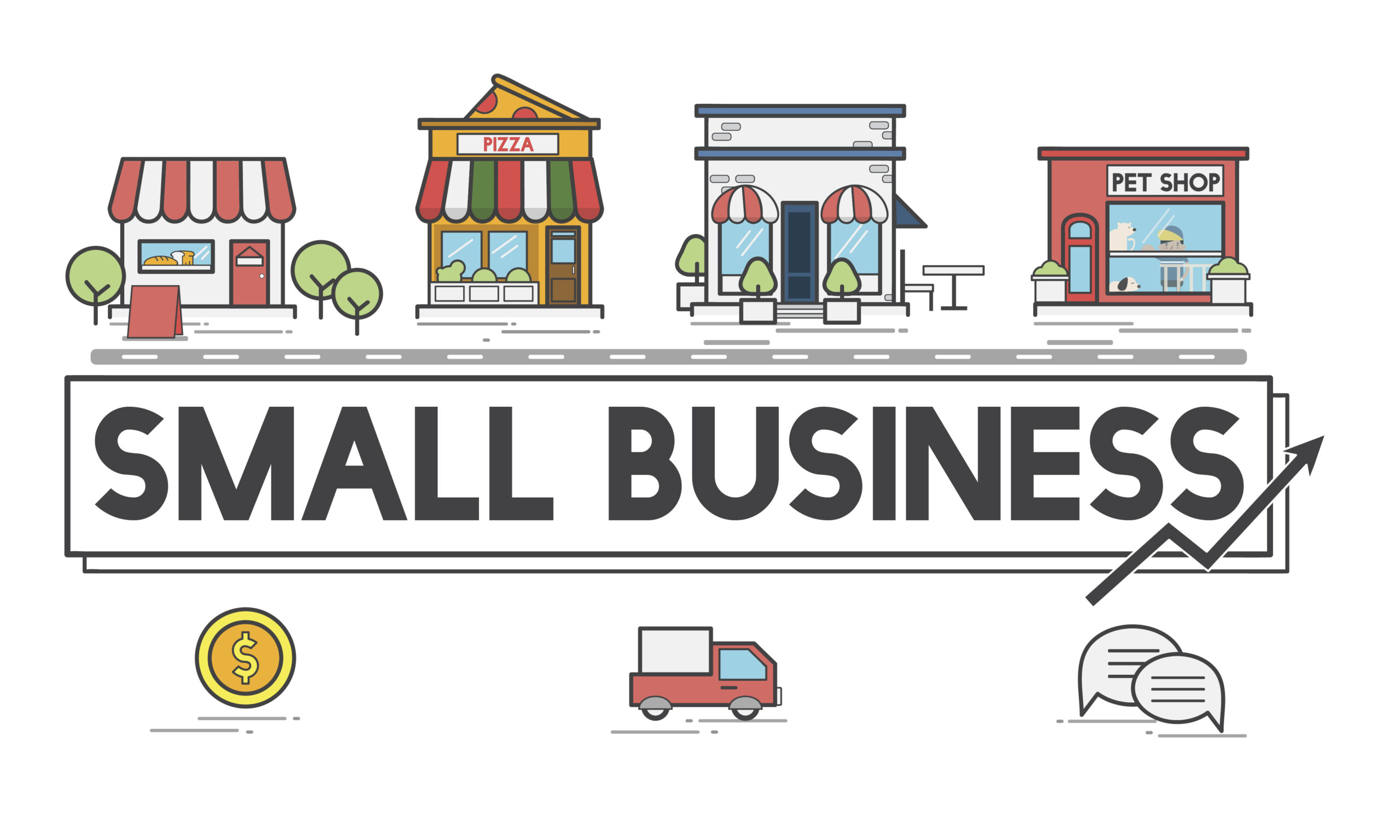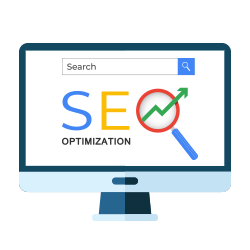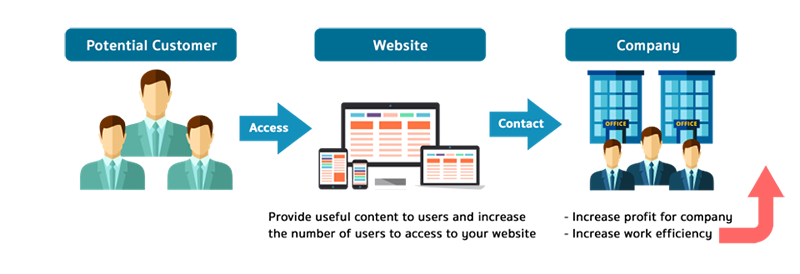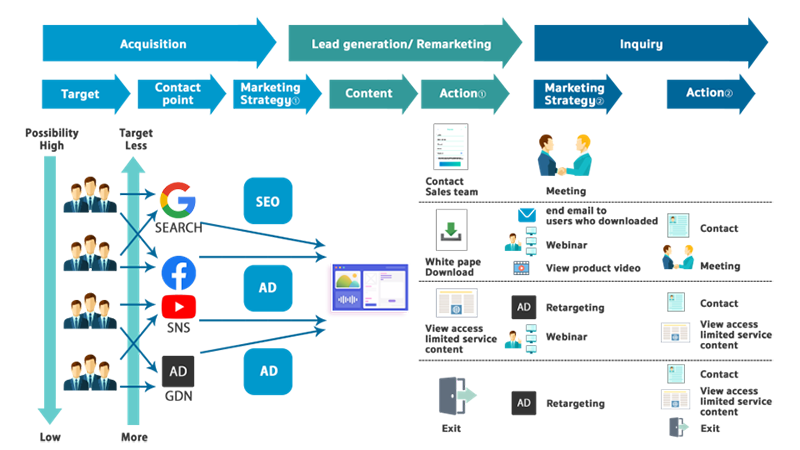SEO สำหรับ Content Marketing: สร้างเนื้อหาที่ทั้งโดนใจ Google และลูกค้า

ในยุคดิจิทัลที่ข้อมูลล้นหลาม การสร้างเนื้อหาที่โดดเด่นและดึงดูดผู้คนให้เข้ามาอ่านเป็นสิ่งสำคัญอย่างยิ่ง แต่การสร้างเนื้อหาที่ดีอย่างเดียวอาจไม่เพียงพอ หากเนื้อหาของคุณไม่มีใครค้นเจอ นั่นคือเหตุผลที่ SEO (Search Engine Optimization) และ Content Marketing ต้องทำงานร่วมกัน
SEO สำหรับ Content Marketing คืออะไร?
SEO สำหรับ Content Marketing หมายถึง การสร้างเนื้อหาที่มีคุณภาพและเป็นประโยชน์ต่อผู้อ่าน พร้อมทั้งปรับแต่งเนื้อหาให้เป็นมิตรกับเครื่องมือค้นหา เช่น Google เพื่อให้เนื้อหาของคุณติดอันดับค้นหาสูงๆ เมื่อผู้คนค้นหาคำที่เกี่ยวข้อง
ทำไม SEO สำหรับ Content Marketing ถึงสำคัญ?
- เพิ่มการมองเห็น: ทำให้เนื้อหาของคุณเข้าถึงผู้คนได้มากขึ้น
- ดึงดูดลูกค้าเป้าหมาย: ช่วยให้คุณเข้าถึงกลุ่มเป้าหมายที่สนใจในผลิตภัณฑ์หรือบริการของคุณ
- สร้างความน่าเชื่อถือ: เนื้อหาที่มีคุณภาพและได้รับการจัดอันดับสูงใน Google จะสร้างความน่าเชื่อถือให้กับแบรนด์ของคุณ
- เพิ่ม Traffic เข้าเว็บไซต์: ช่วยเพิ่มจำนวนผู้เข้าชมเว็บไซต์ของคุณ
- เพิ่มโอกาสในการแปลง: ผู้ที่เข้ามาอ่านเนื้อหาของคุณมีแนวโน้มที่จะกลายเป็นลูกค้าของคุณ

เคล็ดลับในการทำ SEO สำหรับ Content Marketing

- วิเคราะห์คีย์เวิร์ด: ค้นหาคีย์เวิร์ดที่เกี่ยวข้องกับเนื้อหาของคุณและมีปริมาณการค้นหาสูง
- สร้างเนื้อหาคุณภาพสูง: เนื้อหาของคุณต้องเป็นประโยชน์ น่าสนใจ และตอบคำถามที่ผู้คนต้องการรู้
- ปรับโครงสร้างเนื้อหา: ใช้หัวข้อ (Heading) และย่อหน้าที่สั้นและชัดเจน
- ใช้คีย์เวิร์ดอย่างเหมาะสม: ใส่คีย์เวิร์ดใน Title Tag, Meta Description, หัวข้อ และเนื้อหา
- สร้าง Backlink: สร้างลิงก์จากเว็บไซต์อื่นมายังเนื้อหาของคุณ
- ปรับปรุงประสบการณ์ผู้ใช้: ทำให้การอ่านเนื้อหาของคุณเป็นเรื่องที่ง่ายและเพลิดเพลิน
- ติดตามและวิเคราะห์ผลลัพธ์: ใช้เครื่องมือวิเคราะห์เพื่อติดตามประสิทธิภาพของเนื้อหาของคุณ
ตัวอย่าง: บล็อกเกี่ยวกับการทำอาหาร
หากคุณมีบล็อกเกี่ยวกับการทำอาหาร คุณอาจจะสร้างเนื้อหาเกี่ยวกับ “เมนูอาหารกลางวันง่ายๆ” โดยใช้คีย์เวิร์ด เช่น “เมนูอาหารกลางวัน”, “อาหารกลางวันทำง่าย”, “เมนูอาหารกลางวันสุขภาพ” และใส่คีย์เวิร์ดเหล่านี้ใน Title Tag, Meta Description และเนื้อหา นอกจากนี้ คุณอาจจะเพิ่มภาพประกอบและวิดีโอประกอบเพื่อให้เนื้อหาน่าสนใจยิ่งขึ้น
สรุป
SEO สำหรับ Content Marketing เป็นการผสมผสานระหว่างการสร้างเนื้อหาที่มีคุณภาพและการปรับแต่งเนื้อหาให้เป็นมิตรกับเครื่องมือค้นหา การทำ SEO สำหรับ Content Marketing จะช่วยให้เนื้อหาของคุณเข้าถึงผู้คนได้มากขึ้น และสร้างผลลัพธ์ที่เป็นรูปธรรมให้กับธุรกิจของคุณ
คำแนะนำเพิ่มเติม:
- อย่าลืม Mobile-First: ปรับเนื้อหาให้เหมาะสำหรับการอ่านบนมือถือ
- สร้างความหลากหลาย: สร้างเนื้อหาในรูปแบบต่างๆ เช่น บทความ, วิดีโอ, Infographic
- สร้าง Community: สร้างปฏิสัมพันธ์กับผู้อ่านผ่านช่องทางต่างๆ เช่น คอมเมนต์, โซเชียลมีเดีย
- อัปเดตเนื้อหาอย่างสม่ำเสมอ: สร้างเนื้อหาใหม่ๆ อยู่เสมอเพื่อรักษาความสนใจของผู้อ่าน

SEO สำหรับ Content Marketing คือการลงทุนระยะยาวที่คุ้มค่า หากคุณต้องการให้ธุรกิจของคุณเติบโตอย่างยั่งยืนในโลกออนไลน์ การสร้างเนื้อหาที่ทั้งโดนใจ Google และลูกค้า คือสิ่งที่คุณไม่ควรพลาด
#SEO #ContentMarketing #DigitalMarketing
ต้องการให้ I-Comm Avenu ช่วย หรือมีคำถามอื่นๆ สามารถสอบถามได้เลยครับ























































